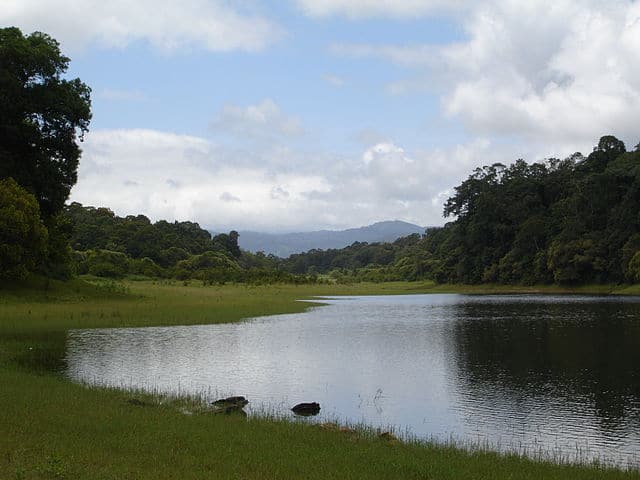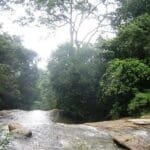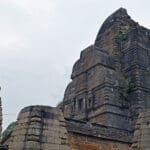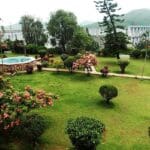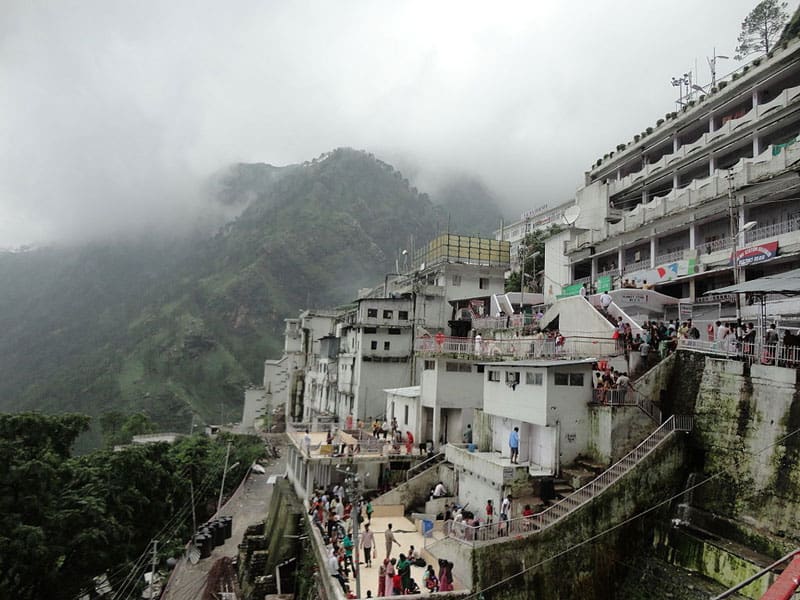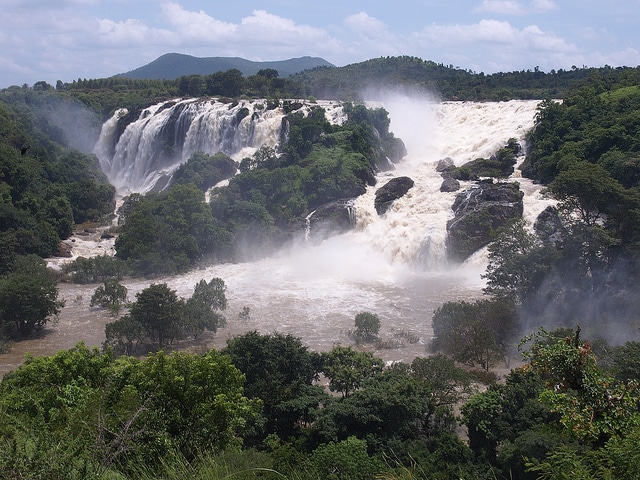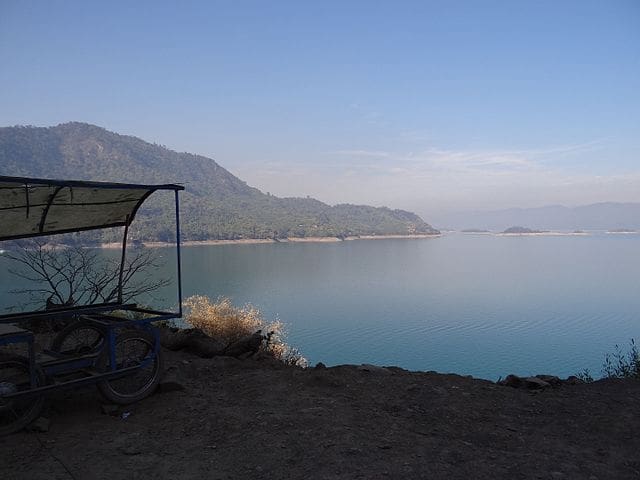Nestled in the lush embrace of the Western Ghats, Periyar Wildlife Sanctuary, Kerala, is a beacon of biodiversity and natural splendor. Spanning over 925 square kilometers in the districts of Idukki and Pathanamthitta, this sanctuary, also known as Periyar Tiger Reserve, is one of India’s most celebrated conservation areas. Renowned for its thriving populations of elephants, tigers, and an array of exotic flora and fauna, it offers an unparalleled experience for nature enthusiasts, wildlife photographers, and adventure seekers. We invite you to explore the intricate ecosystems, thrilling activities, and sustainable tourism initiatives that make Periyar Wildlife Sanctuary a must-visit destination.
A Historical Journey: The Origins of Periyar Wildlife Sanctuary
The story of Periyar Wildlife Sanctuary begins with the construction of the Mullaperiyar Dam in 1895, a monumental British engineering feat that created the iconic Periyar Lake. This artificial lake, spanning 26 square kilometers, became the heart of the sanctuary, transforming the surrounding forest into a haven for wildlife. In 1899, the forest was declared the Periyar Lake Reserve Forest, marking the first step toward formal conservation. By 1934, under the patronage of the Maharaja of Travancore and the guidance of Game Warden S.C.H. Robinson, it evolved into the Nellikkampetty Sanctuary. The sanctuary’s transformation continued, gaining recognition as a tiger reserve in 1978 under Project Tiger and achieving national park status for its core 350 square kilometers in 1982.
This rich history underscores the sanctuary’s significance as a model for conservation. Today, Periyar Wildlife Sanctuary, Kerala, stands as a testament to the harmonious balance between human intervention and nature’s resilience, preserving ecosystems that support endangered species and sustain the region’s ecological health.
The Breathtaking Landscape of Periyar Wildlife Sanctuary
The sanctuary’s topography is a symphony of rolling hills, dense forests, and shimmering waterways. Situated at an elevation of approximately 4,600 feet, Periyar Wildlife Sanctuary boasts a diverse landscape that includes tropical evergreen forests, moist deciduous woodlands, montane grasslands, and the serene Periyar Lake. The lake, formed by the damming of the Periyar River, serves as a lifeline for the region, supporting both wildlife and human communities downstream. The river itself, stretching 244 kilometers, is Kerala’s longest and a critical water source for several towns.
The sanctuary’s lush greenery is punctuated by patches of eucalyptus plantations and dense thickets of teak, rosewood, sandalwood, and kokam trees. These forests create a vibrant tapestry, with mist-laden hills and cascading streams adding to the ethereal beauty. The interplay of light and shadow through the canopy, coupled with the calls of exotic birds, creates an immersive experience that captivates every visitor.
Key Features of the Landscape
- Periyar Lake: A 26-square-kilometer reservoir offering stunning views and opportunities for wildlife sightings during boat safaris.
- Western Ghats: A UNESCO World Heritage Site, providing a dramatic backdrop of rugged hills and verdant valleys.
- River Systems: The Periyar and Pamba rivers, vital for ecological balance and supporting diverse aquatic life.
- Forest Diversity: Evergreen, semi-evergreen, and deciduous forests, alongside montane savannas, creating varied habitats.
Biodiversity: A Treasure Trove of Flora and Fauna
Periyar Wildlife Sanctuary, Kerala, is a biodiversity hotspot, home to an astonishing array of plant and animal life. Its ecosystems support over 2,000 species of flowering plants, including endemic orchids, teak, sandalwood, and tamarind. The sanctuary’s floral diversity is complemented by its rich faunal population, with 35 species of mammals, 265 species of birds, and numerous reptiles, amphibians, and fish.
Mammals of Periyar
The sanctuary is synonymous with its majestic Asian elephants, often seen in herds of up to 50, frolicking in the waters of Periyar Lake. The Bengal tiger, with an estimated population of 35-40, roams the dense forests, though sightings are rare due to their elusive nature. Other notable mammals include:
- Gaur (Indian Bison): The largest bovine species, often spotted grazing in open clearings.
- Sambar Deer: A vulnerable species, frequently seen near water bodies.
- Nilgiri Tahr: An endangered mountain goat, found in the higher altitudes.
- Lion-tailed Macaque: A rare primate with a distinctive mane, endemic to the Western Ghats.
- Indian Giant Squirrel: A vibrantly colored, endangered squirrel with a two-foot-long tail.
Avian Wonders
Birdwatchers will find Periyar Wildlife Sanctuary a paradise, with species like the Malabar Grey Hornbill, Nilgiri Wood Pigeon, and Great Hornbill gracing the skies. The sanctuary’s wetlands attract aquatic birds such as the Darter and Little Grebe, while rare species like the Black Baza and Nilgiri Thrush add to its allure.
Reptiles and Amphibians
The sanctuary’s humid forests and waterways support a variety of reptiles, including the Travancore Cane Turtle, Marsh Crocodile, and Common Indian Monitor. Amphibians like the Kerala Forest Terrapin thrive in the moist ecosystems, contributing to the sanctuary’s ecological diversity.
Unique Flora
The sanctuary’s flora is as captivating as its fauna. Beyond commercially valuable trees like teak and sandalwood, the forests are adorned with:
- Neelakurinji: A shrub that blooms once every 12 years, painting the hills in vibrant purple.
- Orchids: Over 100 species, adding bursts of color to the forest canopy.
- Kokam Trees: Producing a plumlike fruit used in local cuisine.
- Eucalyptus Plantations: Introduced for ecological management, now part of the landscape.
Conservation Efforts: Protecting Periyar’s Legacy
The success of Periyar Wildlife Sanctuary, Kerala, lies in its robust conservation initiatives. Managed by the Kerala Forest Department, the sanctuary operates under a meticulous zoning system:
- Core Zone: A 350-square-kilometer area free from human interference, preserving sensitive habitats.
- Buffer Zone: Allows controlled activities like sustainable resource use by local communities.
- Tourism Zone: Designated for eco-friendly activities, ensuring minimal ecological impact.
The sanctuary’s designation as a tiger reserve under Project Tiger has bolstered efforts to protect the Bengal tiger, with anti-poaching patrols and habitat restoration programs. Project Elephant, initiated in 1991, supports the conservation of Asian elephants, while community engagement programs empower local tribes to participate in conservation efforts. These initiatives have increased the tiger population from 15 in 1972 to approximately 60 today, a testament to the sanctuary’s commitment to biodiversity.
Sustainable Tourism Practices
Periyar is a pioneer in eco-tourism, balancing visitor experiences with environmental preservation. Guided treks, boat safaris, and nature walks are conducted with strict regulations to minimize disturbance. Revenue from tourism supports conservation projects, while local communities benefit from employment opportunities as guides and conservation workers.
Exploring Periyar: Activities for Every Adventurer
Periyar Wildlife Sanctuary offers a plethora of activities that cater to diverse interests, from serene boat rides to adrenaline-pumping treks. Each experience is designed to immerse visitors in the sanctuary’s natural beauty while promoting conservation awareness.
Boat Safaris on Periyar Lake
The Periyar Lake boat safari is the sanctuary’s flagship activity, offering a safe and scenic way to observe wildlife. Conducted by the Kerala Tourism Development Corporation (KTDC), these 1.5- to 2-hour cruises provide breathtaking views of the lake and opportunities to spot elephants, deer, and birds. Key details include:
- Timings: Cruises operate from 7:30 AM to 3:30 PM, with the morning slots (7:30 AM and 9:00 AM) ideal for wildlife sightings.
- Ticket Prices: Approximately ₹225 for adults and ₹75 for children, with bus transfers costing ₹53.
- Booking Tips: Secure tickets before 5:50 AM for early morning cruises, and stay at nearby hotels in Kumily for convenience.
Guided Jungle Treks
For those seeking an immersive experience, the Nature Walk is a 4-5 kilometer trek through diverse habitats. Accompanied by trained tribal guides, trekkers can spot birds, butterflies, and occasionally larger mammals. The trek lasts about 2.5 hours and costs around ₹500 for foreigners and ₹45 for Indian adults. Proper footwear and insect repellent are recommended.
Bamboo Rafting
A unique offering, bamboo rafting combines trekking with rafting on Periyar Lake. This full-day activity includes a 3-hour trek to the rafting point, followed by a serene rafting experience amidst the sanctuary’s pristine landscapes. It’s ideal for adventure enthusiasts and costs approximately ₹2,000 per person.
Jeep Safaris
Jeep safaris take visitors to viewpoints along the sanctuary’s boundary, offering panoramic vistas and chances to spot wildlife from a distance. While jeeps cannot enter the core zone, they provide an exciting way to explore the periphery. Costs range from ₹1,500 to ₹3,500 for a group of up to four.
Birdwatching Tours
With over 265 bird species, Periyar Wildlife Sanctuary is a haven for birdwatchers. Guided birdwatching tours focus on spotting endemic species like the Nilgiri Flycatcher and Great Hornbill. These tours are best conducted in the early morning or late afternoon for optimal sightings.
Planning Your Visit: Practical Information
Visiting Periyar Wildlife Sanctuary, Kerala, requires careful planning to maximize your experience. Here’s a detailed guide to help you prepare.
Best Time to Visit
The ideal time to visit is from October to June, when the weather is cool and dry, and animals are more likely to gather near water bodies. The monsoon season (July to September) brings lush greenery but may limit wildlife sightings due to abundant water sources within the forest.
How to Reach Periyar
- By Air: The nearest airports are Madurai (140 km) and Cochin (190 km), with regular flights from major Indian cities.
- By Rail: Kottayam (114 km) is the closest railway station, well-connected to cities like Kochi and Trivandrum.
- By Road: Kumily, 4 km from the sanctuary, is accessible via NH183 from Kochi (6 hours), Kottayam (4 hours), or Madurai (5.5 hours). Regular bus services are available.
Entry Fees and Timings
- Entrance Fees: ₹500 for foreign adults, ₹180 for foreign children, ₹45 for Indian adults, and ₹15 for Indian children. Additional fees apply for cameras and parking.
- Timings: The sanctuary is open daily from 6:00 AM to 5:00 PM, with the last entry at 5:00 PM. Avoid weekends to escape crowds.
Accommodation Options
Kumily and Thekkady offer a range of accommodations, from budget guesthouses to luxury resorts. Notable options include:
- KTDC Lake Palace: A premium stay within the sanctuary, offering lake views and proximity to wildlife.
- Jungle Camp: Located near Vallakadavu, providing an authentic forest experience with guided treks.
- Budget Hotels: Numerous guesthouses in Kumily offer affordable stays, starting at ₹1,000 per night.
What to Pack
- Lightweight, breathable clothing for summer; light woolens for winter.
- Sturdy trekking shoes and insect repellent for jungle walks.
- Binoculars and a camera for wildlife observation.
- Reusable water bottles to support eco-friendly practices.
Cultural and Culinary Experiences in Thekkady
Beyond its natural allure, Periyar Wildlife Sanctuary is surrounded by the vibrant culture of Thekkady and Kumily. Visitors can explore spice plantations, such as Abraham’s Spice Garden, to learn about cardamom, pepper, and vanilla cultivation. The region’s cuisine, rooted in Kerala’s culinary traditions, features dishes like:
- Kerala Sadya: A traditional feast served on a banana leaf, including rice, sambar, and avial.
- Fish Curry: Made with fresh catch from Periyar Lake, spiced with coconut and tamarind.
- Appam with Stew: A soft pancake paired with a creamy vegetable or meat stew.
Cultural performances, such as Kadathanadan Kalari (martial arts) and Kathakali (classical dance), offer insights into Kerala’s heritage. The Periyar Cultural Center hosts regular shows, enhancing the visitor experience.
Nearby Attractions to Enhance Your Visit
Thekkady and its surroundings offer additional attractions to complement your Periyar Wildlife Sanctuary visit:
- Gavi Forest: A pristine eco-tourism destination, 30 km from the sanctuary, known for its scenic beauty and birdwatching.
- Mullaperiyar Dam: A historic structure offering insights into the region’s engineering heritage.
- Mangala Devi Temple: A 12th-century temple perched at 1,337 meters, accessible with special permission.
- Periyar Spice & Ayurvedic Garden: A sensory journey through Kerala’s spice trade and traditional medicine.
Travel Tips & 15 FAQs with Answers
Travel Tips
- Book boat safari tickets early, especially for morning slots, to secure the best wildlife viewing opportunities.
- Opt for guided treks with local tribal guides for an authentic and safe experience.
- Visit during the dry season (October to June) for optimal wildlife sightings.
- Respect sanctuary rules, such as maintaining silence and avoiding littering, to support conservation efforts.
- Stay hydrated and carry sunscreen, as the sun can be intense even in cooler months.
FAQs
- What is the best time to visit Periyar Wildlife Sanctuary?
The best time is from October to June, when the weather is dry, and animals are more visible near water bodies. - How can I book a boat safari on Periyar Lake?
Tickets can be purchased at the ecotourism center in Kumily or online through the Kerala Tourism website. - Are tigers easy to spot in Periyar?
Tigers are elusive, and sightings are rare due to their nocturnal nature and dense forest cover. - What activities are available at Periyar Wildlife Sanctuary?
Boat safaris, jungle treks, bamboo rafting, jeep safaris, and birdwatching tours are popular activities. - How much does it cost to enter Periyar Wildlife Sanctuary?
Entry fees are ₹500 for foreign adults, ₹180 for foreign children, ₹45 for Indian adults, and ₹15 for Indian children. - Is Periyar safe for families with children?
Yes, the sanctuary is safe, with guided activities and secure accommodations. However, supervise children during treks. - What wildlife can I expect to see?
Expect to see elephants, sambar deer, gaur, and various birds. Tigers and leopards are harder to spot. - How do I reach Periyar from Kochi?
Take a bus or drive via NH183 (6 hours) or fly to Cochin International Airport and drive (190 km). - Are there accommodation options within the sanctuary?
Yes, options like KTDC Lake Palace and Jungle Camp offer stays within or near the sanctuary. - What should I wear for a jungle trek?
Wear sturdy trekking shoes, lightweight clothing, and carry insect repellent and a hat. - Can I visit Periyar during the monsoon season?
Yes, but wildlife sightings may be limited, and trails can be slippery. The scenery is lush, however. - Are cameras allowed in the sanctuary?
Yes, but additional camera fees apply. Tripods may require special permission. - What is the duration of the boat safari?
The boat safari lasts 1.5 to 2 hours, depending on the route and wildlife sightings. - Is Periyar accessible for differently-abled visitors?
Boat safaris are accessible, but treks may be challenging. Contact the ecotourism center for assistance. - Can I buy spices near Periyar Wildlife Sanctuary?
Yes, Kumily and Thekkady have markets and plantations selling authentic spices like cardamom and pepper.


